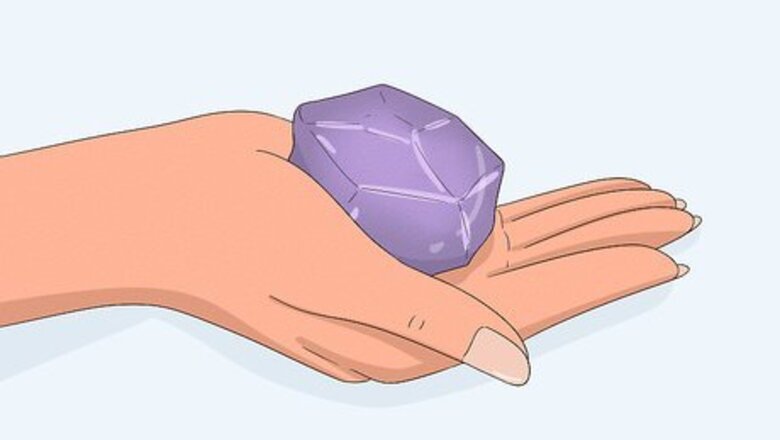
views
- Watch out for unknowledgeable sellers, too-good-to-be-true prices, and crystals that look too bright, glassy, clear, and perfect.
- Real natural crystals are cool to the touch, don’t scratch easily, contain imperfections, and are usually heavier than fakes.
- Heat-treated and synthetic crystals are not considered 100% fake and can still be used for healing, meditation, or manifesting.
Signs a Crystal Is Fake
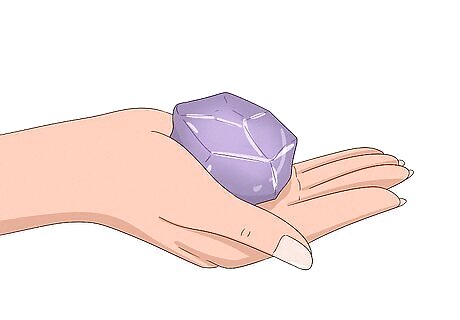
The crystal feels suspiciously light when you hold it. Natural crystals contain metals and other inclusions from their formation in the earth that weigh them down, whereas fakes might be mostly glass. In some cases, a real crystal might weigh the same as a fake that’s twice the size.
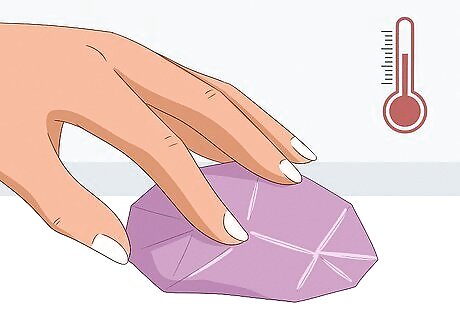
The crystal feels too warm to the touch. Real crystals don’t retain heat for very long and should feel cold to the touch. Pick one up and gauge its temperature—if it’s real, it’ll feel colder than your hand and probably colder than the ambient room temperature, too. If it’s warm or feels like room temperature, then it’s probably not the real deal.
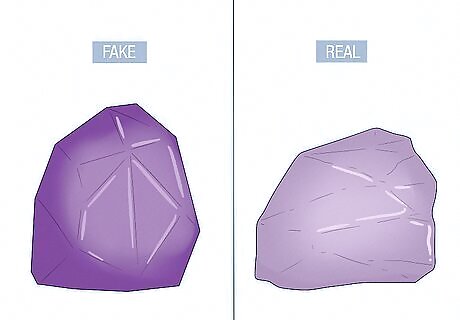
The crystal’s color is super bright compared to other stones. Many real crystals are bright too, but they’ll look translucent or a little muted compared to dyed fakes. If a gem looks exceedingly bright or saturated (think highlighter yellows or neon pinks), there’s a good chance it was dyed to look more attractive. Look at the little fractures and crevices on the crystal's surface. If you see darker colors there, it means dye pigment has accumulated in the cracks.
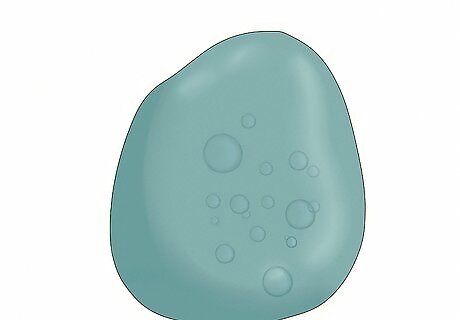
The crystal has tiny air bubbles inside of it. When a real crystal is formed naturally in the earth, it might show cracks, scratches, or small particles inside of it, but never bubbles. Air bubbles are an immediate sign that the stone is probably glass that was cut to look like a crystal. The bubbles might not be noticeable right away—hold the crystal up to your eye or use a magnifying glass to look deep inside.
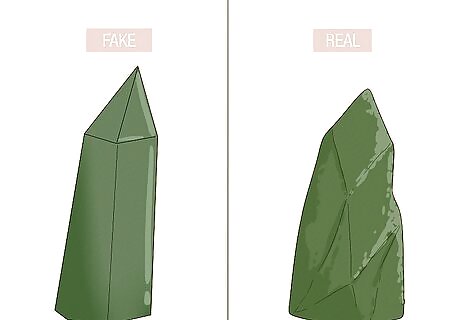
The crystal looks too clear, perfect, or glass-like. Very few natural crystals have perfect clarity, especially colored gems like emeralds or topaz—that’s why it’s such an expensive and prized quality. Instead, most real crystals have crisscrossing fractures or hydrothermal veins inside or attached to its walls. Look out for these inclusions while you shop (even if you’re looking at pictures online). If they’re absent, the “crystal” is likely glass. Glass imposters will have super sharp, clear angles and look highly polished (natural crystals are rarely cut as precisely as glass). Hold your suspicious crystal up to some writing. Real crystals will distort the letters in many directions, but glass will just magnify them. Compare the price of the crystal to its clarity. If you see a large, perfect emerald that isn’t thousands of dollars, for example, then chances are it’s synthetic.
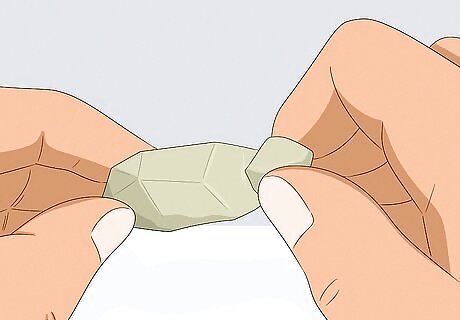
The crystal shatters or gets scratched easily. Many (but not all) of the most common healing crystals are fairly hard—at least a 6 on the Mohs hardness scale. They’re pretty resistant to damage when they’re dropped or scratched. Glass is only a 5.5 on the Mohs scale. If you think a crystal is fake, look up its supposed hardness and test it by trying to scratch a glass sheet with it—if it’s genuine and the right hardness, it should leave a mark. This test won’t work for soft crystals like selenite or fluorite, which are below 5 on the Mohs scale. Alternatively, try the drop test. Hard crystals like quartz (a 7 on the Mohs scale) will not break, but glass will shatter or partially break inside its walls.
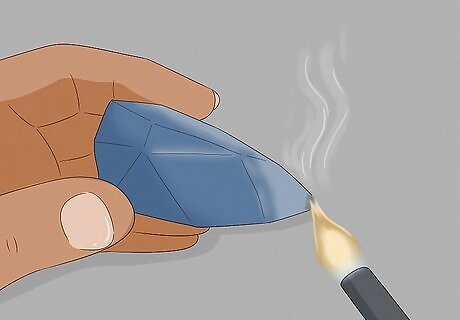
The crystal smokes, smells, or melts when it’s exposed to a flame. If you suspect you’re working with a fake, hold your crystal over a lighter for 10 to 20 seconds. If there’s any plastic, it’ll start to melt or morph. Real crystals change with heat too, but not at the relatively low temperature of a lighter. This trick is great for exposing plastic, but won’t work if your crystal contains glass. Do this test at home on crystals you already own (most shopkeepers won’t appreciate torching their products in the store!). Plastic crystals will also feel lighter than real ones and scratch more easily.
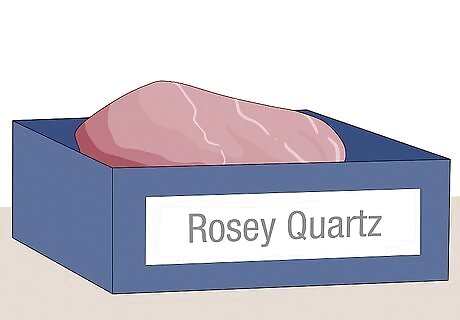
The crystal has an eccentric, silly, or fruity name. Some genuine crystals do have enticing names, but many that sound too “fun” or descriptive are typically a marketing device for fake stones. A fake rose quartz might be a piece of colored glass marketed as Rosey Quartz, for example, or strawberry quartz (which is real but rare) might be a fake that’s dyed to be extra bright-colored. If a name strikes you as odd and the crystal looks suspiciously clear, sparkly, and perfect, then it's most likely an imposter.
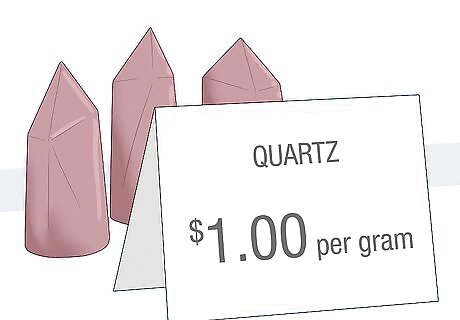
The price seems too low for a quality crystal. If you spot a deal for a crystal that seems too good to be true, then it probably is (especially online). Look for your desired crystal at multiple retailers to get a sense of the standard price range, size, and quality. A low price doesn’t always mean it’s a fake, but be prepared to look for other clues to reveal its authenticity.

The retailer doesn’t seem to know much about their crystals. Crystal shoppers have questions that a reputable seller could answer easily and in detail. If you walk into a shop and the seller only gives vague, unhelpful answers, it could be a sign they’re not selling genuine crystals. If you’re buying online, read customer reviews to get a sense of the retailer’s reputation. Fake products are a big red flag! Look at the number of rare crystals the shop has. If there’s a massive stock of an uncommon stone, chances are that at least some of them are imposters. Real crystals have an energy you can sense. Trust your intuition if you feel like the shop isn’t supplying genuine crystals.
Do heat-treated crystals count as fake?
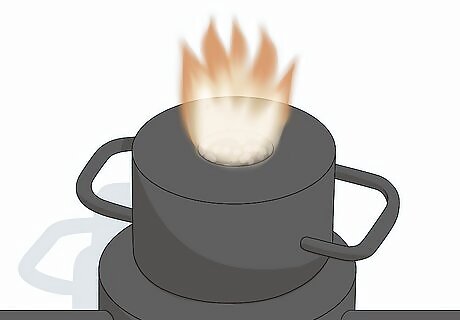
Heat treatment enhances natural crystals and isn’t considered fake. Many common healing stones, like citrine or aquamarine, are heated to improve their color. Heat is a natural element of crystal formation in the earth, and it can be almost impossible to tell whether a crystal was heated before or after mining without a microscope and a well-trained eye. Energetically, heated crystals are almost as vibrant as the stones you’d pluck from the ground and are used by professional healers with great success. Natural heating in the earth and laboratory heating after mining produce nearly identical results. Even professional jewelers label gems and crystals as “probably heat treated” since it’s so hard to tell!
How do synthetic crystals compare to natural ones?
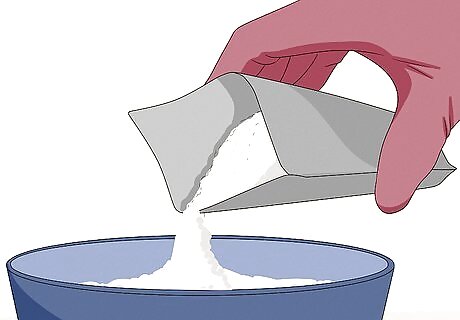
Synthetic crystals are chemically identical but energetically weaker. They’re made in labs and mimic real crystals so closely that it’s difficult to spot the difference—they’re typically clearer and lack the complex geometric structures found in nature. As a result, they only vibrate with about a third of the energy of earth-formed crystals. Synthetics are a great option for attractive, affordable, and ethically-sourced jewelry. Research the average price for the crystal you’re interested in. If the price seems low, you’re probably looking at a man-made crystal. Natural crystals get energy from the unique and rare combination of chemicals, heat, pressure, and luck found naturally within the earth.
The Most Commonly Faked Crystals
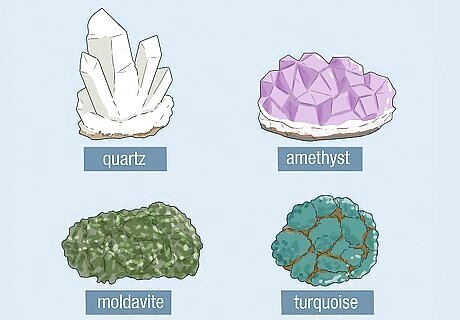
Quartz, amethyst, moldavite, and turquoise are popularly faked crystals. They’re relatively in demand and popular, which means shady retailers can profit off of dyed stones and glass or plastic fakes. Scrutinize these stones extra hard when you’re crystal shopping: Moldavite is popular on TikTok and it’s hard to spot the real thing since it’s a natural glass. Other glasses like obsidian are easily faked, too. Any quartz can be convincingly faked, especially clear or rose quartz. The imposters are usually made of glass. Colored glass is also commonly passed off as amethyst, and it can be difficult to tell the difference. Lapiz lazuli, citrine, turquoise, carnelian, agate, and pink or purple jade are commonly faked by dyeing less valuable stones to look more high-quality. Other common fakes include malachite, fluorite, larimar, and peridot.



















Comments
0 comment